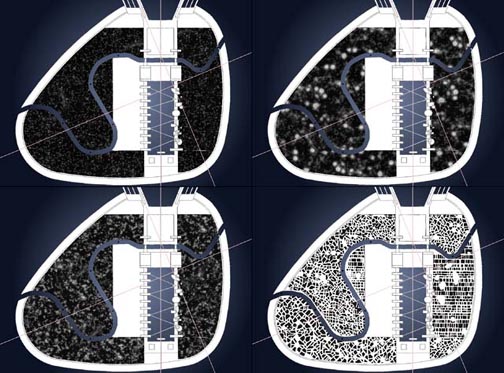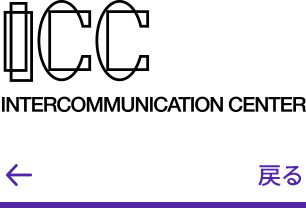
|

|

|
| Internet |

|

|
In the Internet section we welcome
"Anyone" to this Utopian project. While Signatures invites
international architects and Visitors includes
architects of the digital generation, this section asks for the participation
of people from all domains.
It is said that the internet is a spontaneously unified whole of scattered
local networks. In contrast to the commercial networks which have
"master plans", the internet is basically free and supported
by innumerable volunteers, and it is changing the world. Can city
planning simulate such a natural becoming ?
There is a basic difference between networks through which electrons
flow, and networks through which people, cars and energy circulate.
In the world of electrons that travel 300,000 km per second, the notion
of distance is disregarded. This is a topological world where only
the relationship between objects is meaningful. City planning has
been dominated by the geometry of three-dimensional Euclidian space,
where the notion of distance is fundamental. The real city, however,
is melting dramatically from this classical space into topological
space. In what ways will cities be changed by these new elements;
topological space, volunteerism, emergence and evolution ? How will
they be visualized ? In Haishi -- the Mirage City Project, we begin
with the abstract image shown above. We traced the distribution of
churches in Venice and projected them onto Haishi. Attributes of being
a "church" were stripped away and the scheme was reduced
to a distribution of nodes. A synapse-like network will grow between
these nodes. By assuming the growth of this network as street patterns,
this scheme simulates the process through which urban sectors can
be formed. We ask participants to give properties to these nodes and
to think of the process through which the network is developed. Participants
can develop specific local networks and by layering them together,
a unified Haishi network will emerge.
We would also like a comprehensive discussion concerning evolutionary
procedures and methods of visualization. We hope people from different
fields will participate. Not only architects are invited, but also
internet specialists, scholars, Otakus (net addicts), hackers, and
so on. |
|
|
|
